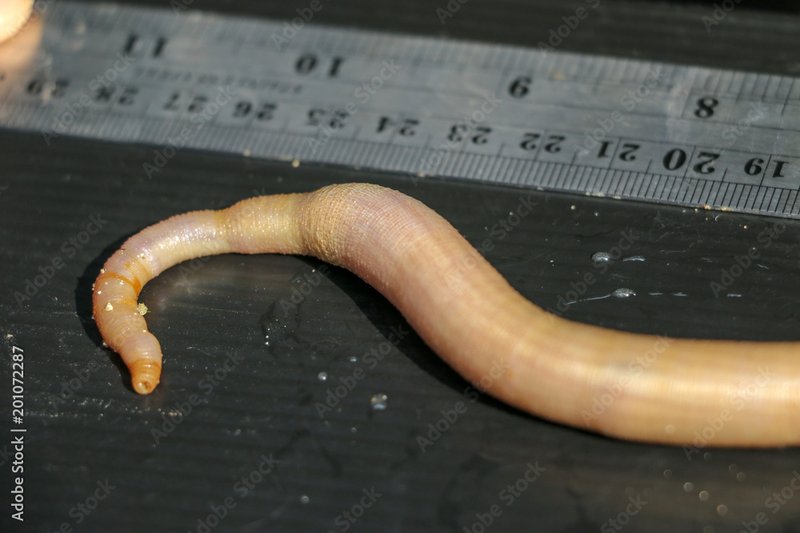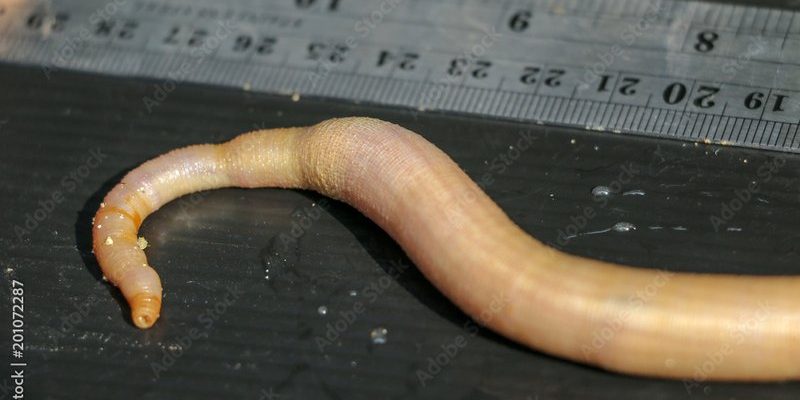
Ribbon worms, or *Nemertea*, are more than just long; they have a unique anatomy that allows them to reach astonishing lengths, far surpassing most animals on land and in water. Picture them as the elastic bands of the animal kingdom, capable of stretching out like a tape measure when needed. But what makes these creatures so special, and just how long can they really get? Let’s dive in and unravel the world of ribbon worms and their record-breaking sizes.
What Are Ribbon Worms?
Ribbon worms are a type of invertebrate that can be found in various aquatic environments, from the ocean’s depths to freshwater streams. They have long, slender bodies that can be quite colorful, usually coming in shades of pink, yellow, or brown. Their most remarkable feature is their ability to extend their bodies dramatically, allowing them to capture prey or escape predators.
Imagine the ribbon worm as a magician pulling a seemingly endless ribbon from a hat. This ability is due to a special type of muscle tissue that lets them extend and retract their bodies. Ribbon worms are part of a larger group, but what really sets them apart is their unique feeding method: they often have a long proboscis, which is like a straw, used to snag their prey quickly.
You might be wondering about their habitats. Ribbon worms love to hide in marine environments, often burrowing into the sand or lurking among rocks. This makes them somewhat elusive, which is why they don’t get as much attention as other sea creatures. Still, they play an important role in their ecosystems, helping control populations of smaller organisms.
How Long Can Ribbon Worms Get?
Ribbon worms are known for their impressive lengths, which can reach up to 30 meters (98 feet) in rare cases. For some perspective, that’s longer than a blue whale! If you’re trying to visualize this, think about a school bus—many ribbon worms can stretch longer than that!
The longest known species is the *Lineus longissimus*, which has been reported to exceed this remarkable length. Scientists often describe these worms as “slimy noodles” because of their slender, flexible bodies. It’s hard to believe that something so delicate can be so long, right?
There’s also a fascinating aspect of their size: ribbon worms can sometimes contract to shrink into tiny, compact forms. This ability to expand and contract not only helps them evade predators but also allows them to fit into tight spaces where they can hunt for smaller prey. Just picture that: an animal that can go from super long to nearly invisible in the blink of an eye!
Different Types of Ribbon Worms
There’s quite a variety of ribbon worms out there. While they all share the impressive length characteristic, they differ in color, habitat, and feeding habits. The two main groups are the *Nemertea* and *Amphiporus*, both of which have their own unique traits.
1. **Nemertea**: This group consists of the traditional ribbon worms known for their long, thin bodies. They can be found in both marine and freshwater environments.
2. **Amphiporus**: These ribbon worms are often larger and tend to be more colorful. You’ll find them mostly in marine habitats, where they thrive in shallow waters.
Different types of ribbon worms have adapted to their surroundings in remarkable ways. For instance, some species have developed vibrant colors to warn predators of their potentially toxic nature, while others use camouflage to blend in with their environments.
Understanding these differences is crucial for scientists studying marine ecosystems. It helps them identify how various species interact with their environment and sustain themselves as part of the food web.
The Ecological Importance of Ribbon Worms
Ribbon worms play a vital role in their ecosystems. As both predators and prey, they help maintain a balanced food web. On one hand, they hunt small crustaceans and other invertebrates, keeping those populations in check. On the other hand, they serve as food for larger animals like fish and birds.
Their unique feeding method also contributes to their ecological niche. Ribbon worms use their proboscis to capture prey quickly, often injecting toxins to subdue them. This technique allows them to consume a variety of small animals, making them adaptable hunters.
You might not realize it, but creatures like ribbon worms can have a significant impact on the environment by influencing the populations of other organisms. Healthy populations of ribbon worms can indicate a balanced marine ecosystem, while a decline may signal environmental issues that need attention. It’s just one more reason to appreciate the delicate balance of life beneath the waves.
Record-Breaking Ribbon Worms
When it comes to size records, one ribbon worm stands out above the rest. The *Lineus longissimus* holds the title for being the longest recorded ribbon worm. Specimens have been found measuring an astonishing 30 meters, with some claims stretching even further.
But how do scientists document these lengths? Often, they catch these creatures in their natural habitats and carefully measure them. There have been instances of ribbon worms being discovered in tide pools, where their elongated bodies sometimes get tangled among the rocks, providing researchers with an opportunity to take measurements.
Interestingly, many of these records are anecdotal, and there’s still a lot we don’t know about the exact lengths and habitats of various ribbon worm species. Each expedition into the ocean depths brings new surprises and potential record-breakers, and that’s part of what makes marine biology so thrilling!
The Mystery of Ribbon Worms
Despite their fascinating characteristics, ribbon worms still hold many mysteries. Scientists continue to study their behaviors, reproductive strategies, and survival tactics. For instance, how do they manage to stretch so long without breaking? What unique adaptations do they possess to thrive in their respective environments?
Research into these creatures sheds light on broader topics in marine biology, ecology, and evolution. The more we learn about ribbon worms, the more we understand about the complexities of ocean life and the interdependence of species.
Let’s not forget the thrill of discovery! Every time a new species is identified, it adds to our understanding of biodiversity. These ribbon worms might seem simple at first glance, but they are intricate parts of a much larger puzzle.
In conclusion, ribbon worms are not just ordinary creatures; they represent some of the most astonishing lengths of life on Earth. With their incredible stretching abilities and diverse habitats, they are true wonders of the animal kingdom. If you ever find yourself near a tide pool or exploring the shoreline, keep an eye out for these remarkable invertebrates.
It’s a reminder that the world around us is filled with extraordinary surprises, and sometimes the longest creatures are hiding in plain sight. So, next time you think of the longest animal, remember the ribbon worm and its fascinating journey through the depths of the ocean! Who knows what your next outdoor adventure might reveal?

